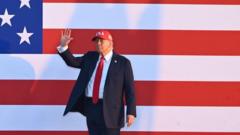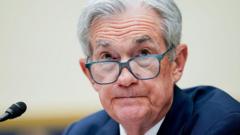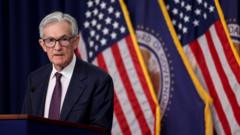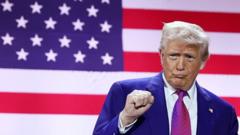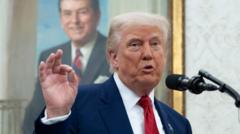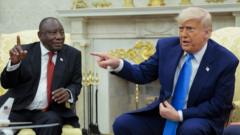The latest Labor Department report reveals that the US added 143,000 jobs in January, with the unemployment rate dropping slightly to 4%. Analysts note the decline in job growth is offset by revised stronger figures from previous months, signaling a more stable economic environment. Employment in healthcare and retail sectors bolstered the January numbers, with average hourly pay rising by 4.1% compared to last year. However, concerns linger over potential future impacts of policy changes by the new administration.
**US Job Market Shows Signs of Stability Amid Slower Growth**

**US Job Market Shows Signs of Stability Amid Slower Growth**
Despite a slowdown in job creation, the US unemployment rate remains low, indicating a resilient economy facing uncertainty ahead.
The American job market is exhibiting a complex blend of resilience and caution.
Employer activity in the US experienced a notable slowdown last month, adding 143,000 jobs in January, while the unemployment rate dipped to 4%, as reported by the Labor Department. This latest labor data paints a picture of a stable, albeit subdued economy. The figures emerge as President Trump’s administration is poised to implement significant economic changes, including proposed cuts to government spending and changes to immigration policies, which could further complicate the economic landscape.
In response to the ambiguous economic outlook, the US central bank has decided to keep interest rates steady, after a series of cuts initiated in September. Federal Reserve Chairman Jerome Powell acknowledged that concerns about the job market had lessened, a signal that the bank's previous worries might have been overblown.
Market analysts, however, remain cautiously optimistic. "While the January payroll figure was lower than anticipated, revisions from November and December indicate stronger job creation in those months, and the declining unemployment rate is a positive signal," noted Ellen Zentner, Morgan Stanley Wealth Management's chief economic strategist.
A focal point of job growth in January was the healthcare and retail sectors, even amid unpredictable weather events, including severe wildfires and winter storms. Additionally, the report highlighted a 4.1% increase in average hourly wages compared to January 2023. However, the annual revisions suggested that the job gains for 2024 were lower than initially expected.
Market reactions to the news were minimal, with US shares showing little movement. White House Press Secretary Karoline Leavitt framed the report as evidence of the “Biden economy” underperforming, reinforcing the need for Trump’s "pro-growth policies."
Samuel Tombs, Chief US Economist for Pantheon Macroeconomics, indicated that despite the revisions, job growth is stabilizing, and they no longer foresee a Fed rate cut in March. “The economy created fewer jobs than we had thought last year, but it now appears the trend isn’t worsening,” he stated, although he cautioned that risks of another downturn in job growth remain given the current hiring climate and uncertainties surrounding upcoming policy shifts.
Employer activity in the US experienced a notable slowdown last month, adding 143,000 jobs in January, while the unemployment rate dipped to 4%, as reported by the Labor Department. This latest labor data paints a picture of a stable, albeit subdued economy. The figures emerge as President Trump’s administration is poised to implement significant economic changes, including proposed cuts to government spending and changes to immigration policies, which could further complicate the economic landscape.
In response to the ambiguous economic outlook, the US central bank has decided to keep interest rates steady, after a series of cuts initiated in September. Federal Reserve Chairman Jerome Powell acknowledged that concerns about the job market had lessened, a signal that the bank's previous worries might have been overblown.
Market analysts, however, remain cautiously optimistic. "While the January payroll figure was lower than anticipated, revisions from November and December indicate stronger job creation in those months, and the declining unemployment rate is a positive signal," noted Ellen Zentner, Morgan Stanley Wealth Management's chief economic strategist.
A focal point of job growth in January was the healthcare and retail sectors, even amid unpredictable weather events, including severe wildfires and winter storms. Additionally, the report highlighted a 4.1% increase in average hourly wages compared to January 2023. However, the annual revisions suggested that the job gains for 2024 were lower than initially expected.
Market reactions to the news were minimal, with US shares showing little movement. White House Press Secretary Karoline Leavitt framed the report as evidence of the “Biden economy” underperforming, reinforcing the need for Trump’s "pro-growth policies."
Samuel Tombs, Chief US Economist for Pantheon Macroeconomics, indicated that despite the revisions, job growth is stabilizing, and they no longer foresee a Fed rate cut in March. “The economy created fewer jobs than we had thought last year, but it now appears the trend isn’t worsening,” he stated, although he cautioned that risks of another downturn in job growth remain given the current hiring climate and uncertainties surrounding upcoming policy shifts.




